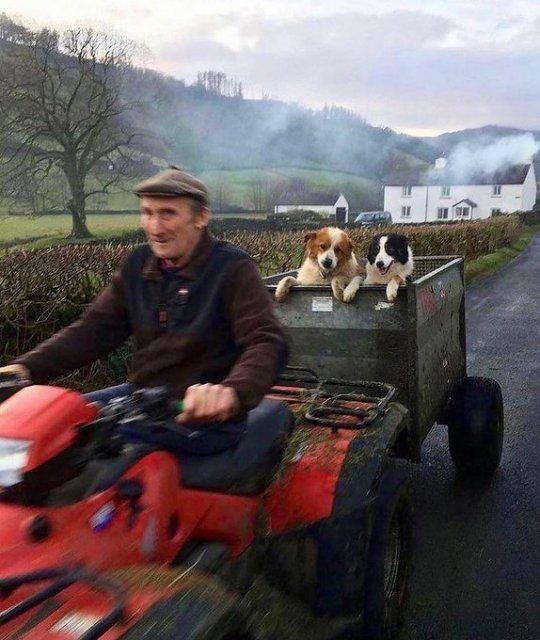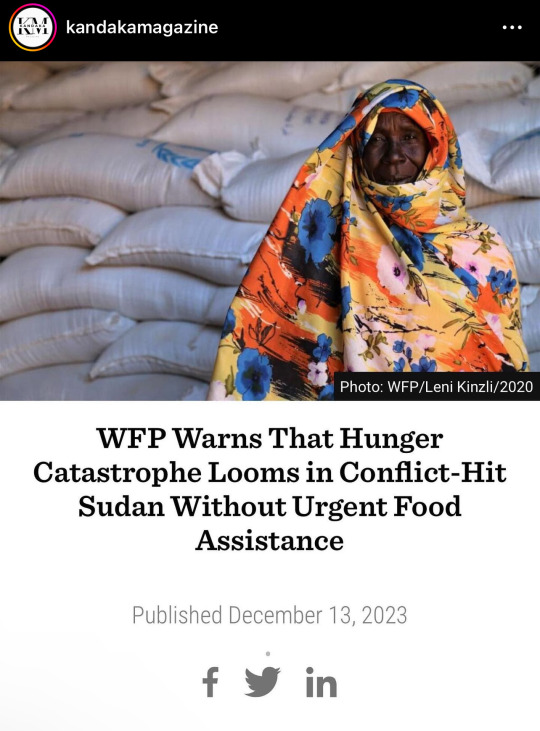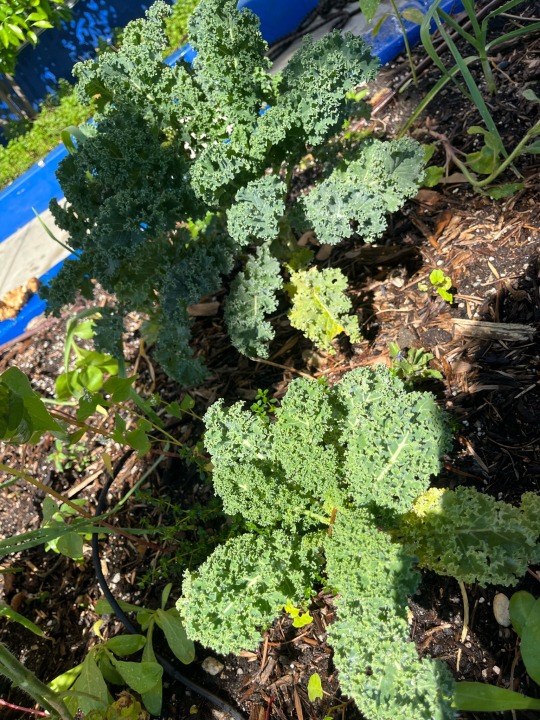#Food Security
Text
THE GERMAN FARMERS WON
After Bringing Berlin to a complete halt, the Government have backed down on several ludicrous taxation & net zero policy impacting food production.
Of course you won’t see this on fake news MSM as they don’t wish you to know the wider narrative and/or implications of.
This however is just the battle & not the war.
#Germany#Farmers#Well Done#Food Security#Advocate for Agriculture#Support Local Farmers#No Farms - No Food#No Farmers - No Food - No Future#Like Minded People#Make Tumblr ★ Great Again
696 notes
·
View notes
Text
In international development circles, most people are familiar with the World Bank’s data showing that extreme poverty has declined dramatically over the past several decades, from 43 per cent of the world’s population in 1981 to less than 10 per cent today. This narrative is based on the World Bank’s method of calculating the share of people who live on less than $1.90 per day (in 2011 “PPP” terms).
But a growing body of literature argues that the World Bank’s PPP-based method suffers from a major empirical limitation, in that it does not account for the cost of meeting basic needs in any given context (see here, here and here). Having more than $1.90 PPP does not guarantee that a person can afford the specific goods and services that are necessary for survival.
In recent years, scholars have developed a more accurate method for measuring extreme poverty, by comparing people’s incomes to the prices of essential goods in each country (specifically food, shelter, clothing and fuel). This approach is known as the “basic needs poverty line” (BNPL), and it more closely approximates what the original concept of “extreme poverty” was intended to measure.
[...]
Extreme poverty is not a natural condition, but a sign of severe dislocation. Historical data on real wages since the 15th century indicates that under normal conditions, across different societies and eras, people are generally able to meet their subsistence needs except during periods of severe social displacement, such as famines, wars, and institutionalised dispossession, particularly under European colonialism. What is more, BNPL data shows that many countries have managed to keep extreme poverty very close to zero, even with low levels of GDP per capita, by using strategies such as public provisioning and price controls for basic essentials.
In other words, extreme poverty can be prevented much more easily than most people assume. Indeed, it need not exist at all. The fact that it persists at such high levels today indicates that severe dislocation is institutionalised in the world economy – and that markets have failed to meet the basic needs of much of humanity. To address this problem, and to end extreme poverty – the first objective of the Sustainable Development Goals – will require public planning to prioritise the production of, and guarantee access to, the specific goods and services that people need to live decent lives.
197 notes
·
View notes
Text

As with doctors, British farmers make their daily rounds too.
#English farmer#Lake District#English countryside#ATV#UK#trailer#pet dogs#all-terrain vehicle#farmhouse#rural britain#agriculture#food security#farming#hard work#dedication
208 notes
·
View notes
Text
The Canada Revenue Agency (CRA) will be issuing the long-promised "grocery rebate" payments to eligible Canadians on July 5.
Months after Parliament passed the one-time benefit first unveiled as part of the 2023 federal budget, the payments will be hitting Canadians' bank accounts on Wednesday.
The food-inflation focused affordability measure is set to roll out to approximately 11 million low- and modest-income Canadians.
Essentially a re-branded GST rebate boost, the payment will be issued through Canada's GST/HST tax credit system, alongside the regular quarterly GST/HST payments. [...]
Continue Reading.
Tagging: @politicsofcanada
715 notes
·
View notes
Text
The FAO roadmap was published at the Cop28 climate summit in December and accepts that diets “absolutely must [change] for human and planetary health”. But its 120 actions do not include reducing meat and dairy consumption in nations where most people already eat unhealthy amounts. Instead, many of the FAO’s recommendations are to intensify the efficiency of animal farming techniques.
“It’s very striking: the FAO doesn’t include one of the clearest interventions that would help meet both environmental and health targets,” said Cleo Verkuijl, of the Stockholm Environment Institute US and one of the eight authors of the commentary from academic institutions in the US, the Netherlands and Brazil.
“Also really surprising is the fact that the FAO completely dismisses alternative proteins,” she said. These had been shown to have far smaller environmental impacts than conventional meat but the FAO claimed, without providing evidence, that plant-based meats had “nutritional deficiencies”, the experts said.
A report from the UN Environment Programme (Unep), published in December, said “alternatives to animal products such as meat and dairy may contribute to significantly reducing the environmental footprint of the current global food system”.
59 notes
·
View notes
Text
I like to see videos like this, not just because it’s happier than the massacres and blood shed, but to remind everyone that these are just normal people, normal children and normal everyday helpers. And even in the darkest of times, happiness can found in sharing with each other, and helping one another.
PS. I don’t understand any Arabic, really, but the heart knows, right?
I found this via instagram, on Nour Talal Alnajjar’s page, which you can find here.
#free palestine#palestine#gaza#free gaza#food security#help Gaza#Gaza is starving#flour massacre#nour_alnajjar96#instagram#video#Arabic#children of Gaza#helpers of Gaza
86 notes
·
View notes
Text
Foraging has become a REALLY hot topic over the past few years. We even saw a surge of interest at the start of the pandemic fueled both by the shutdown, and by concerns about food security due to grocery shortages. My foraging classes are consistently the most popular ones I offer, and the Facebook groups I'm on are absolutely teeming with new people interested in getting started.
But as with any extractive activity, foraging has its downsides. The more people out in the woods and fields looking for edible mushrooms (and plants), the more strain that puts on local ecosystems. In my classes I advocate for only taking 25% of a given species in an area (unless you find, like, three chanterelles, in which case just pick the three chanterelles.) A lot of people have less restraint, and of course you have commercial mushroom hunters who will clean out every single marketable mushroom they find, leaving nothing for anyone else.
This is a topic that I don't feel gets enough attention in the foraging world, but we desperately need to be talking about it more. Most of us who forage do not rely on it as a primary form of food security, and have other reasonable options for acquiring food. Yes, it can be fun to go out looking for mushrooms and berries and such when we're out hiking and camping, and I am a big fan of what I call "incidental foraging"--picking things you find while you're doing something else. It's good to know how to identify edible and it's a nice treat when I run across something. But unless my situation changes to where my food security is seriously threatened, I do not personally feel the need to be one of those foragers where 90% of what they eat is something they foraged, especially when I am financially secure enough to be able to go to the grocery store whenever I want. I think most foragers these days are in a similar situation, though there are always going to be people for whom foraging is a necessary and vital part of food security.
So yes, I am strongly in favor of bag limits for non-indigenous people, hardship permits for those in financial need (and don't make the application process too much of a hurdle), and curbs on widespread commercial mushroom harvest. It's not just to save something for other people, but to reduce wear and tear on the land. Those mushrooms need to be spreading spores for the next generation, and I worry that overharvesting is going to have deleterious effects both on the mushroom species being harvested, and the health of the ecosystems they are a part of.
#foraging#mushroom foraging#mushroom hunting#mushrooms#fungi#fungus#mycology#food#food security#nature#outdoors#ecology#environment#conservation
145 notes
·
View notes
Text





via kandaka magazine on Instagram
72 notes
·
View notes
Text
I've seen so many influencers buying things carelessly that I'm starting to get a dangerously twisted view of the world. So, a reality check, radfems, tell me whats your economic state of distress in a grocery store.
#poverty#food security#economic poll#radfem#grocery store#buying things#finances#economy#trying to see how normal people live#by normal I mean radfems#I'm in poverty but i rarely go to the store I am mostly making and growing stuff at this point
71 notes
·
View notes
Link
225 notes
·
View notes
Text
How to Cook Cheap Staples:
I recently learned that in the USA, on average, each person eats about 1,670 calories per day of just 4 foods: wheat, corn, rice and soy.
Wheat, corn, rice and soy also happen to be some of the cheapest foods available in US grocery stores. If you buy them as wheat flour, corn meal, rice, and soybean oil. If you buy them as bread, soda, rice cakes, and fried foods, they can also be some of the most expensive.
Based on the least expensive versions of these staple crops available on Amazon (because I didn't want to get off the couch to go to the store for you all), you can get 23,380 calories (the average 1,670 calories per day for 2 weeks) in 5lb of brown rice ($6.20), 5lb of wheat flour ($2.49), 2lb corn meal ($2.98), and 32oz of soybean oil ($6.48).
This means if you make all your own staple foods, 3/4 of your calories could be taken care of for about $9/week. You could even go cheaper than this if you buy white rice. I just threw the brown stuff in there for flair and fiber.
Here's how to cook your staples:
Yeast Bread Loaf
Quick Bread Loaf
Tortillas
Pancakes
Fresh Pasta
Hand Pie/Pierogi/Dumpling Dough
Polenta (don't need the cheese or butter)
Cornbread (can replace butter with oil and buttermilk with milk or water)
Corn Cakes
Tortillas (masa- this is different than cornmeal)
Tamale dough (masa)
Steamed Rice
Congee
Rice Pudding
Rice Cake
If you're trying to save money, shoot for a meal plan that basically includes your staples as the primary food, and adorn with your protein and vegetables. That means, say, a bowl of polenta with tomato-beef sauce. Or rice with black beans, onions, peppers, and spices. Keep in mind that since your staples have been taken care of, you just need about 400 calories in legumes, meat, fruit, and vegetables per day to meet a 2,000-calorie target. That's pretty much an apple and peanut butter for breakfast, a little tomato-beef sauce at lunch, and a handful of beans flavored with onions, bacon, and peppers at dinner.
If that sounds like you're eating mostly starch and fat, you're right, but technically if you're the average American you're already doing that. This is just doing it cheaper.
76 notes
·
View notes
Text
GERMAN FARMERS WIN AGAINST GLOBALIST GOVERNMENT
This however is just a battle in a much larger war.
GOD, Family & Community
No Farms - No Food
No Farmers - No Food - No Future
Freedom - is the sound of Truck & Locomotive air horns
Freedom - is the smell of Diesel Fuel
Freedom - is the sight of a Truck Convoy moving in unison
Freedom - is the touch of a man with Rough Calloused Hands making contact with a soft weak liberal politician & leaving a lasting impression on the civil servant
Freedom - is the taste of Hope for a better Future.
#Germany#Olaf Scholz#Farmers#Convoy#Food Security#Advocate for Agriculture#Support Local Farmers#No Farms - No Food#No Farmers - No Food - No Future#Like Minded People#Make Tumblr ★ Great Again
545 notes
·
View notes
Text
What if Tucson’s million new trees — and the rest of the country’s — didn’t just keep sidewalks cool? What if they helped feed people, too?
That’s what Brandon Merchant hopes will happen on the shadeless south side of Tucson, a city where about one-fifth of the population lives more than a mile from a grocery store. He’s working on a project to plant velvet mesquite trees that thrive in the dry Sonoran Desert and have been used for centuries as a food source. The mesquite trees’ seed pods can be ground into a sweet, protein-rich flour used to make bread, cookies, and pancakes. Merchant, who works at the Community Food Bank of Southern Arizona, sees cultivating mesquite around the city and surrounding areas as an opportunity to ease both heat and hunger. The outcome could be a network of “food forests,” community spaces where volunteers tend fruit trees and other edible plants for neighbors to forage.
“Thinking about the root causes of hunger and the root causes of health issues, there are all these things that tie together: lack of green spaces, lack of biodiversity,” Merchant said. (The food bank received half a million dollars from the Biden administration through the Inflation Reduction Act.)
Merchant’s initiative fits into a national trend of combining forestry — and Forest Service funding — with efforts to feed people. Volunteers, school teachers, and urban farmers in cities across the country are planting fruit and nut trees, berry bushes, and other edible plants in public spaces to create shade, provide access to green space, and supply neighbors with free and healthy food. These food forests, forest gardens, and edible parks have sprouted up at churches, schools, empty lots, and street corners in numerous cities, including Boston, Philadelphia, Atlanta, Seattle, and Miami.
“It’s definitely growing in popularity,” said Cara Rockwell, who researches agroforestry and sustainable food systems at Florida International University. “Food security is one of the huge benefits.”
There are also numerous environmental benefits: Trees improve air quality, suck carbon from the atmosphere, and create habitat for wildlife, said Mikaela Schmitt-Harsh, an urban forestry expert at James Madison University in Virginia. “I think food forests are gaining popularity alongside other urban green space efforts, community gardens, green rooftops,” she added. “All of those efforts, I think, are moving us in a positive direction.”
200 notes
·
View notes
Text
Idk how people go into social science research knowing that you're anyway going to spend your entire life arguing with wilfully ignorant fuckwits over stuff like "keeping one-tenth of the world's GDP locked up in a handful of people's accounts is bad for a functional economy'', "you shouldn't have to pay money to stay alive", "letting people mind their own business won't hurt you", "knowledge is good actually", "people have the right to do whatever they want with their own bodies", "children are people too", "germs are real", "spreading disease is bad for society", "genocide is bad actually", "letting the government kill people puts everyone in danger because everyone is people", "access to long-distance murder weapons increases the chances of getting murdered", "you can't give a clump of cells the same rights as a human being" ad fucking nauseaum until you die.
#maybe we should just use small words and picture books#make up a ''why people dont need murder weapons'' song#hotline for explaining ''it's called human 'rights' because you can't take them away''#social justice#ableism#anti vaxxers#human rights#abolition#homelessness#universal healthcare#universal basic income#food security#military industrial complex#child rights#body autonomy#pro choice#gay rights#trans rights#acab#anti intellectualism#racism#disability justice#compassion fatigue#knee of huss
87 notes
·
View notes
Text
Toronto is about to be home to a pay-what-you-can restaurant that allows everyone barrier-free access to food.
Created by Chef Jagger Sean Gordon, Feed it Forward is an organization that's working towards ensuring affordable access to quality foods across the city through a number of different initiatives, and they're about to add one more.
Residents in the St. Clair West area of the city recently noticed something exciting going into a vacant space — a new location of Soup Bar by Feed it Forward, one of the organization's many PWYC restaurant concepts.
Soup Bar has existed in the city in various forms over the years, including a pop-up at Market 707 back in 2017, and the latest iteration will be officially opening for business on March 1 for at least six months serving hot and frozen soups, stews and chillis.
Continue Reading
Tagging @politicsofcanada
#cdnpoli#canada#canadian politics#canadian news#ontario#toronto#mutual aid#cost of living#food security#community aid#food access
118 notes
·
View notes
Text







Mercado la Paloma edible garden managed by Urban Soul Farmer.
23 notes
·
View notes